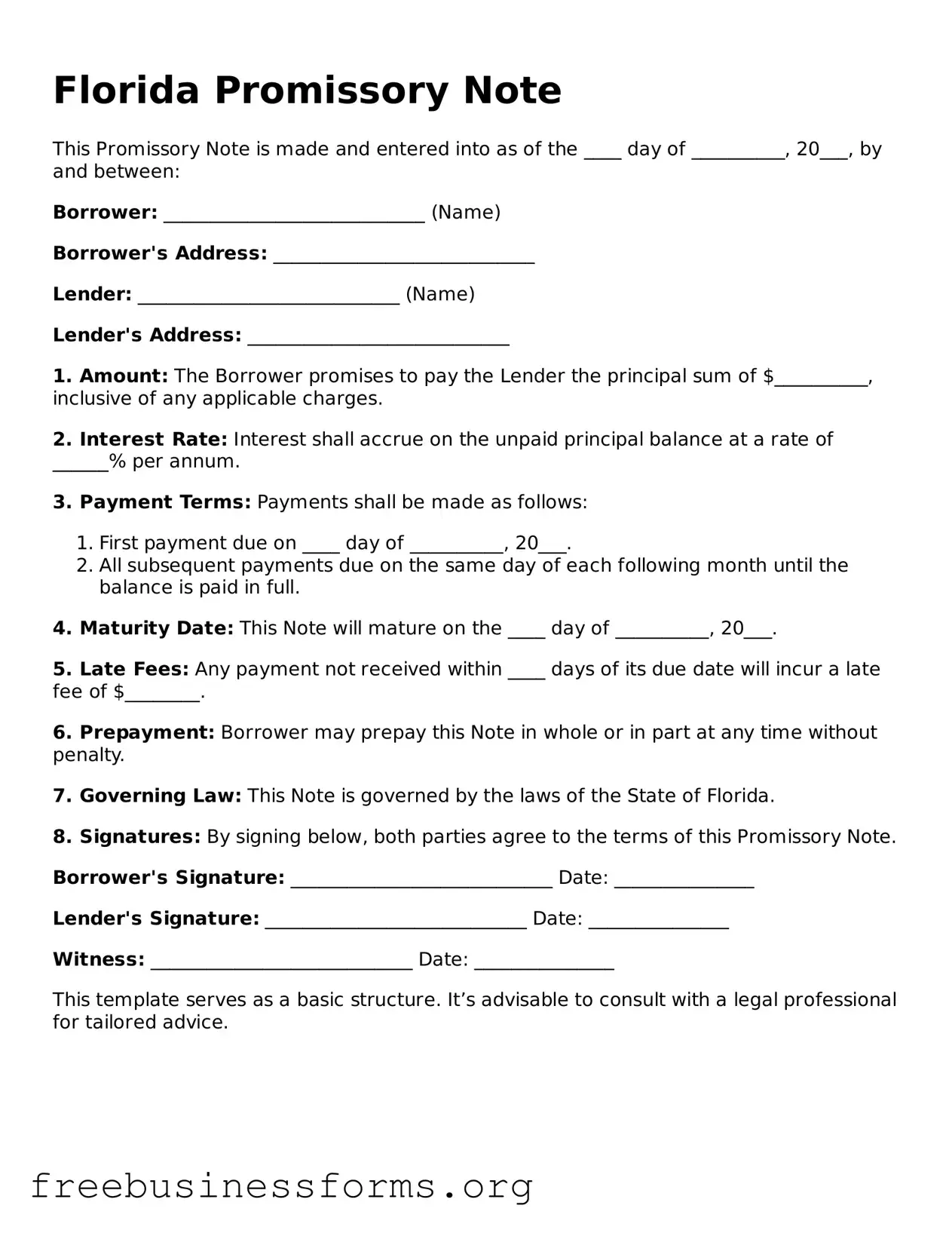Florida Promissory Note
This Promissory Note is made and entered into as of the ____ day of __________, 20___, by and between:
Borrower: ____________________________ (Name)
Borrower's Address: ____________________________
Lender: ____________________________ (Name)
Lender's Address: ____________________________
1. Amount: The Borrower promises to pay the Lender the principal sum of $__________, inclusive of any applicable charges.
2. Interest Rate: Interest shall accrue on the unpaid principal balance at a rate of ______% per annum.
3. Payment Terms: Payments shall be made as follows:
- First payment due on ____ day of __________, 20___.
- All subsequent payments due on the same day of each following month until the balance is paid in full.
4. Maturity Date: This Note will mature on the ____ day of __________, 20___.
5. Late Fees: Any payment not received within ____ days of its due date will incur a late fee of $________.
6. Prepayment: Borrower may prepay this Note in whole or in part at any time without penalty.
7. Governing Law: This Note is governed by the laws of the State of Florida.
8. Signatures: By signing below, both parties agree to the terms of this Promissory Note.
Borrower's Signature: ____________________________ Date: _______________
Lender's Signature: ____________________________ Date: _______________
Witness: ____________________________ Date: _______________
This template serves as a basic structure. It’s advisable to consult with a legal professional for tailored advice.
